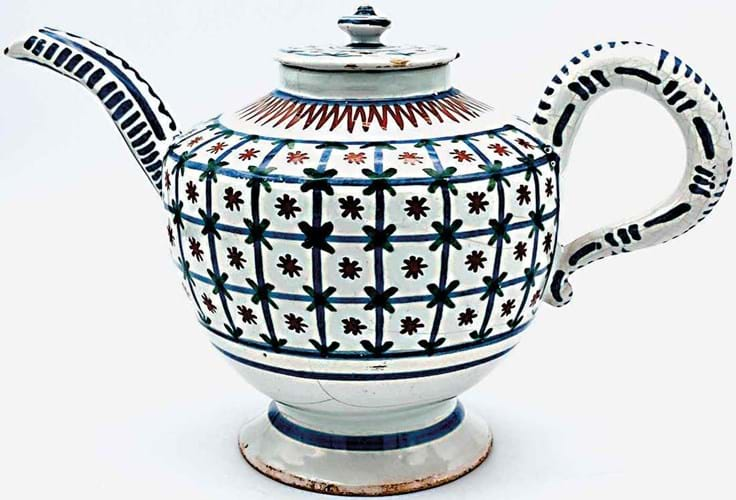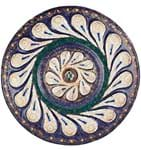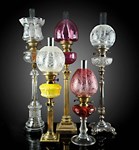More refined vessels made in porcelain or silver were much preferred for serving the precious leaves of the tea plant than coarser earthenware. On a practical level delft also proved a poor material for holding boiling water, being prone to crazing and cracking when subject to temperature change.
This example, decorated in polychrome with a geometric repeating design, sold at David Lay (18% buyer’s premium) in Penzance on March 10-11. Probably dating from the first quarter of the 18th century, it was in relatively good condition with a star crack to the body and chips to the lid and the foot. Estimated at £80-120, it made £3300.
A delft teapot of similar decoration but different form attributed to Jonathan Chilwell’s delftworks in Vauxhall, c.1720, realised £2500 as part of Syd Leverthan’s Longridge collection at Christie’s in 2011.
Mystery Mr Arnold
Another highlight of this Cornish sale was a rare George III wine bottle – a typical late 18th century form in olive green glass with a seal dated 1772 and inscribed I Arnold Plym Dock. Estimated at £120-180, it took £2600.
It was one of many lots in the sale from the estate of June Barrington-Ward (1922-2002) and Maggie Cameron Frazer (1923-2021) – two remarkable ladies who met during the Second World War.
After living in Chiswick, west London, they retired in 1978 to a farmhouse near Lanreath in Cornwall where Barrington-Ward continued to make sculpture and Cameron Fraser worked as an academic specialising in antique glass. This bottle from her collection is one of a handful known with this seal.
Another (one sold in a specialist bottle sale in the US for $1900) bottle is discussed by David Burton in his three-volume Antique Sealed Bottles (2015) although it appears the identity of Mr Arnold of Plymouth Dock is as yet unknown.















